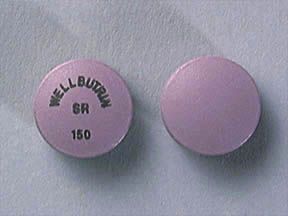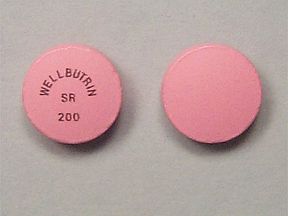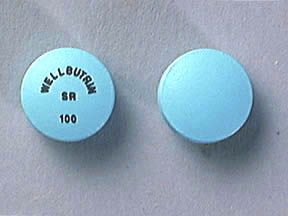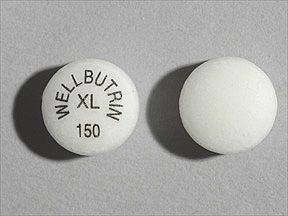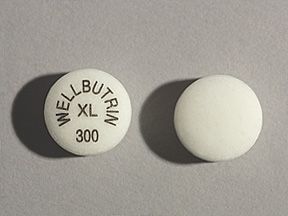Key Takeaways
- Wellbutrin comes as sustained-release (SR) and extended-release (XL) oral tablets.
- The starting dosage of Wellbutrin SR for depression is 150 milligrams (mg) once per day, which may be increased to 150 mg twice per day after 3 days. The maximum dosage is 400 mg per day.
- The starting dosage of Wellbutrin XL for depression is 150 mg once per day, which may be increased to 300 mg once per day after 4 days. The maximum dosage is 450 mg per day.
Wellbutrin SR is used in adults to treat major depressive disorder (MDD). Wellbutrin XL is used in adults to treat MDD or to prevent seasonal affective disorder (SAD).
Note: The term “Wellbutrin” is used throughout this article to describe both the SR and XL forms of the drug.
The active ingredient in Wellbutrin is bupropion. Wellbutrin is an antidepressant and belongs to a group of drugs called norepinephrine and dopamine reuptake blockers.
This article describes the dosages of Wellbutrin, as well as its strengths and how to take it.
Here are details about the dosages of Wellbutrin sustained-release (SR) and extended-release (XL) oral tablets. Doctors prescribe Wellbutrin SR to treat MDD in adults. They prescribe Wellbutrin XL to treat MDD or to help prevent SAD.
Doctors typically prescribe the lowest dose possible. If needed, they’ll increase your dose of Wellbutrin slowly.
Note: This chart highlights the basics of Wellbutrin’s dosage. Dosages are shown in milligrams (mg). Be sure to read on for more details.
| Form | Starting dosage | Maintenance dosage* | Maximum daily dosage |
|---|---|---|---|
| Wellbutrin SR | 150 mg once per day | 150 mg twice per day | 400 mg |
| Wellbutrin XL | 150 mg once per day | 300 mg once per day | 450 mg |
* This is the dosage you’ll usually take throughout the remainder of your treatment. If needed for your condition, your doctor may increase it. But they won’t increase it beyond the maximum daily dosage.
What are the forms of Wellbutrin?
Wellbutrin comes in two tablet forms for swallowing: SR and XL. With both tablets, the drug releases slowly into the body after you take a dose. But with the XL tablet, the drug releases more slowly over time.
What strengths does Wellbutrin come in?
Wellbutrin comes in the following strengths.
- Wellbutrin SR tablets:
- 100 mg
- 150 mg
- 200 mg
- Wellbutrin XL tablets:
- 150 mg
- 300 mg
What are the usual dosages of Wellbutrin?
Your doctor will likely start you on a low dosage and adjust it over time to reach the right amount for you. They’ll ultimately prescribe the smallest dosage that provides the desired effect.
The following information describes dosages that are commonly used or recommended for each condition. But be sure to take the dosage your doctor prescribes for you. They’ll determine the best dosage to fit your needs.
Dosage for MDD (depression)
Both Wellbutrin SR and Wellbutrin XL are approved to treat MDD, which is sometimes called depression.
The starting dosage of Wellbutrin SR is 150 mg once per day. After 3 days, your doctor might increase your dosage to 150 mg twice per day. This will be the dosage you’ll take throughout the remainder of your treatment. The maximum dosage of Wellbutrin SR is 400 mg per day.
The starting dosage of Wellbutrin XL is 150 mg once per day. After 4 days, your doctor might increase your dosage to 300 mg once per day. This will be the dosage you’ll take throughout the remainder of your treatment. The maximum dosage of Wellbutrin XL is 450 mg per day.
Dosage for SAD
Wellbutrin XL is approved to prevent SAD. The starting dosage of Wellbutrin XL is 150 mg once per day. Your doctor will usually start this treatment in autumn before symptoms begin. After 1 week, they might increase your dosage to 300 mg once per day. This will be the dosage you’ll take throughout the remainder of your treatment. The maximum dosage of Wellbutrin XL is 450 mg per day.
You’ll continue taking Wellbutrin XL throughout winter.
Is Wellbutrin used long term?
The duration of your Wellbutrin treatment will depend on the condition for which it’s prescribed.
For MDD, Wellbutrin is usually used as a long-term treatment. If you and your doctor determine that it’s safe and effective for your condition, you’ll likely take it long term.
For SAD, you may need to take Wellbutrin only during the winter months.
To find out how long you’ll need to take Wellbutrin, talk with your doctor.
Dosage adjustments
Your doctor may need to adjust your dosage of Wellbutrin if you have liver problems. Your doctor will determine a safe dosage for you, considering the severity of your liver damage. For moderate to severe liver problems, doctors prescribe either:
- a lower daily dose
- the usual daily dose, to be taken every 2 days instead of daily
Your doctor also may consider lowering your dosage if you have kidney problems or mild liver problems. If you have kidney problems or mild liver problems, talk with your doctor. They can determine the safest dosage for you.
Here are answers to some commonly asked questions about Wellbutrin’s dosage.
Can my Wellbutrin dose be increased from 150 mg to 300 mg?
Yes, that’s likely with both Wellbutrin SR and Wellbutrin XL tablets.
To begin treatment, your doctor will likely prescribe 150 mg per day. This is the starting dose of Wellbutrin SR and XL to treat MDD or to prevent SAD.
Then they’ll likely increase your dosage to 300 mg per day. This will be your maintenance dosage (the dosage you’ll take throughout the remainder of your treatment).
The following schedule gives more details:
| Purpose | Tablet | When dosage increase occurs | Maintenance dosage* |
|---|---|---|---|
| treat MDD | Wellbutrin SR | after 3 days | 150 mg twice per day |
| treat MDD | Wellbutrin XL | after 4 days | 300 mg once per day |
| prevent SAD | Wellbutrin XL | after 1 week | 300 mg once per day |
* If needed for your condition, your doctor may increase your maintenance dosage. But they won’t increase it beyond the maximum daily dosage. See the “What is Wellbutrin’s dosage?” section for details about maximum daily dosage.
Ask your doctor if you have more questions about dosage increases during your treatment.
What is the Wellbutrin dosage for weight loss?
Wellbutrin is not approved for weight loss. Using it for weight loss is an off-label use of Wellbutrin. (With off-label use, doctors prescribe a drug for a purpose other than its approved uses.)
If you’d like more information on weight loss options, talk with your doctor.
Is Wellbutrin used for anxiety? If so, what is the dosage?
Wellbutrin is not approved to treat anxiety. Using it for anxiety is an off-label use of Wellbutrin. (With off-label use, doctors prescribe a drug for a purpose other than its approved uses.)
But certain other antidepressants are approved to treat generalized anxiety disorder. These include escitalopram (Lexapro) and paroxetine (Paxil).
If you’d like more information on anxiety treatment options, talk with your doctor.
Can my doctor prescribe a 600-mg dose of Wellbutrin?
No, your doctor won’t prescribe a 600-mg dose of Wellbutrin, as this is above the maximum recommended amount.
The maximum dosage of Wellbutrin SR is 400 mg per day. And the maximum dosage of Wellbutrin XL is 450 mg per day. Taking a dose higher than the recommended maximum can cause serious side effects, which could include seizures.
Ask your doctor if you have questions about your dosage of Wellbutrin for your condition.
The dosage of Wellbutrin you’re prescribed may depend on several factors. These include:
- the type and severity of the condition you’re taking the drug to treat
- the form of Wellbutrin you’re taking
- other conditions you may have (see “Dosage adjustments” in the “What is Wellbutrin’s dosage?” section)
You’ll take Wellbutrin SR or XL once per day to start. After a few days, your doctor may increase your dosage of Wellbutrin SR, which you’ll take twice per day. You should take these doses at least 8 hours apart.
Your dose of Wellbutrin XL also may increase, but you’ll continue to take it once per day.
You can take Wellbutrin SR or XL with or without food.
You should swallow Wellbutrin SR or XL tablets whole. Do not crush, cut, or chew them. If you do, the medication will hit your system too quickly, which can result in serious side effects such as seizures.
If you have difficulty swallowing tablets, ask your doctor or pharmacist for suggestions, or check out these tips for swallowing pills.
For information on the expiration, storage, and disposal of Wellbutrin, see the “Expiration” section of this Wellbutrin overview.
Accessible drug containers and labels
Some pharmacies provide medication labels that:
- have large print or use braille
- feature a code you can scan with a smartphone to change the text to audio
Ask whether your current pharmacy offers these accessibility features. If not, your doctor or pharmacist may be able to recommend pharmacies that do.
If you have trouble opening medication bottles, let your pharmacist know. They may be able to supply Wellbutrin in an easy-open container. They may also have tips to help make it simpler to open the drug’s container.
If you miss a dose of Wellbutrin, take it as soon as you remember. But if it’s almost time for your next scheduled dose, skip the missed dose. And then take your next dose at the scheduled time. Be sure to wait at least 8 hours between your Wellbutrin doses.
If you’re not certain whether to skip or take a missed dose, ask your pharmacist. Do not take an extra dose to make up for a missed dose. A double dose can increase your risk of serious side effects such as seizures.
To avoid missed doses, consider using tools like pill organizers, medication reminders, or smartphone apps.
Do not take more Wellbutrin than your doctor prescribes, as this can lead to serious side effects. If you take too much Wellbutrin, your doctor may monitor you closely for signs and symptoms of overdose.
Symptoms of overdose
Symptoms caused by an overdose can include:
- seizure
- hallucinations
- fainting
- changes in behavior or mood
In rare situations, overdose can cause death.
What to do in case you take too much Wellbutrin
Call your doctor right away if you think you’ve taken too much Wellbutrin. You can also call 800-222-1222 to reach America’s Poison Centers or use its online resource. But if you have severe symptoms, immediately call 911 (or your local emergency number) or go to the nearest emergency room.
Disclaimer: Healthline has made every effort to make certain that all information is factually correct, comprehensive, and up to date. However, this article should not be used as a substitute for the knowledge and expertise of a licensed healthcare professional. You should always consult your doctor or another healthcare professional before taking any medication. The drug information contained herein is subject to change and is not intended to cover all possible uses, directions, precautions, warnings, drug interactions, allergic reactions, or adverse effects. The absence of warnings or other information for a given drug does not indicate that the drug or drug combination is safe, effective, or appropriate for all patients or all specific uses.





